So, I don’t know what other people do when they’re not at their day job, I really don’t.
Here they are, those other people.

They spend their time, I’m sure, doing regular chores, and reading the Sunday Times, and going out to the movies, and all kinds of fun stuff.
Here’s a bunch on a pontoon boat, having fun in the sun, relaxing together! Jeeze, I hope they all wore sunscreen!

This is what I did. I took out the trash, which was my only time to go outside. (Yes, I had dinner with my friend Wendy Rathbone, but that was a fluke; she happened to be in town, so out we went!) But other than that, I searched for pictures of Newgate Prison. Believe it or not, there are tons. Here’s just one.
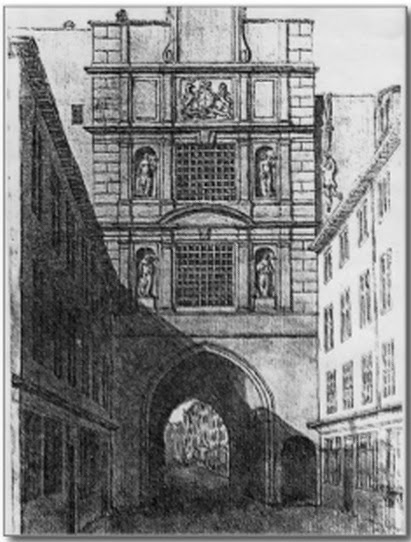
Then I looked for pictures of the banks of the River Thames, or just of the river itself. Of those, there are two types.
The sweetly colorful painting….this one is of Blackfriars Bridge, which is my favorite bridge in London.
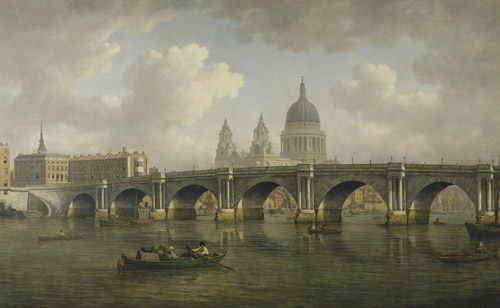
And the gritty black and white photograph. Here’s one of wooden steps going down to the shoreline. I like to imagine that this location is on the north side of the river, halfway to Greenwich.
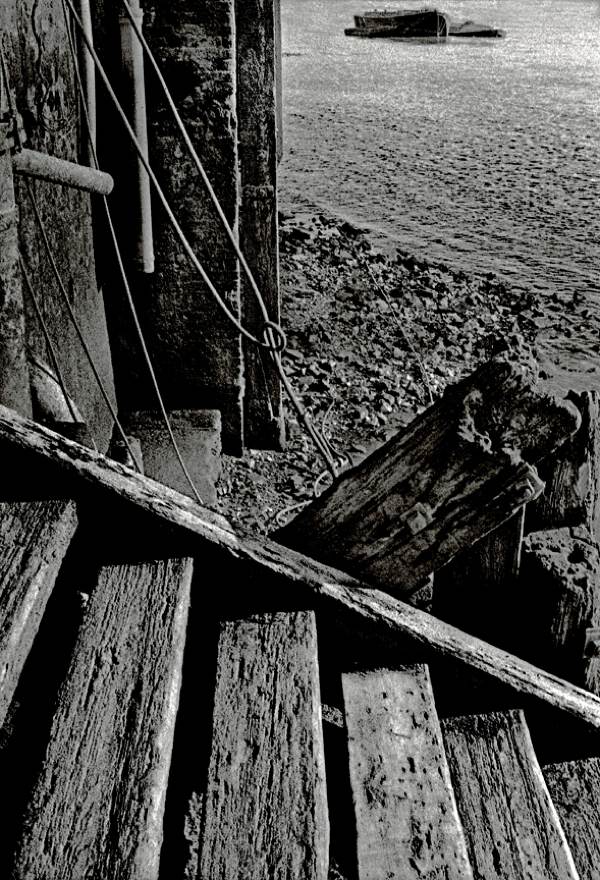
And here’s another from the shoreline.
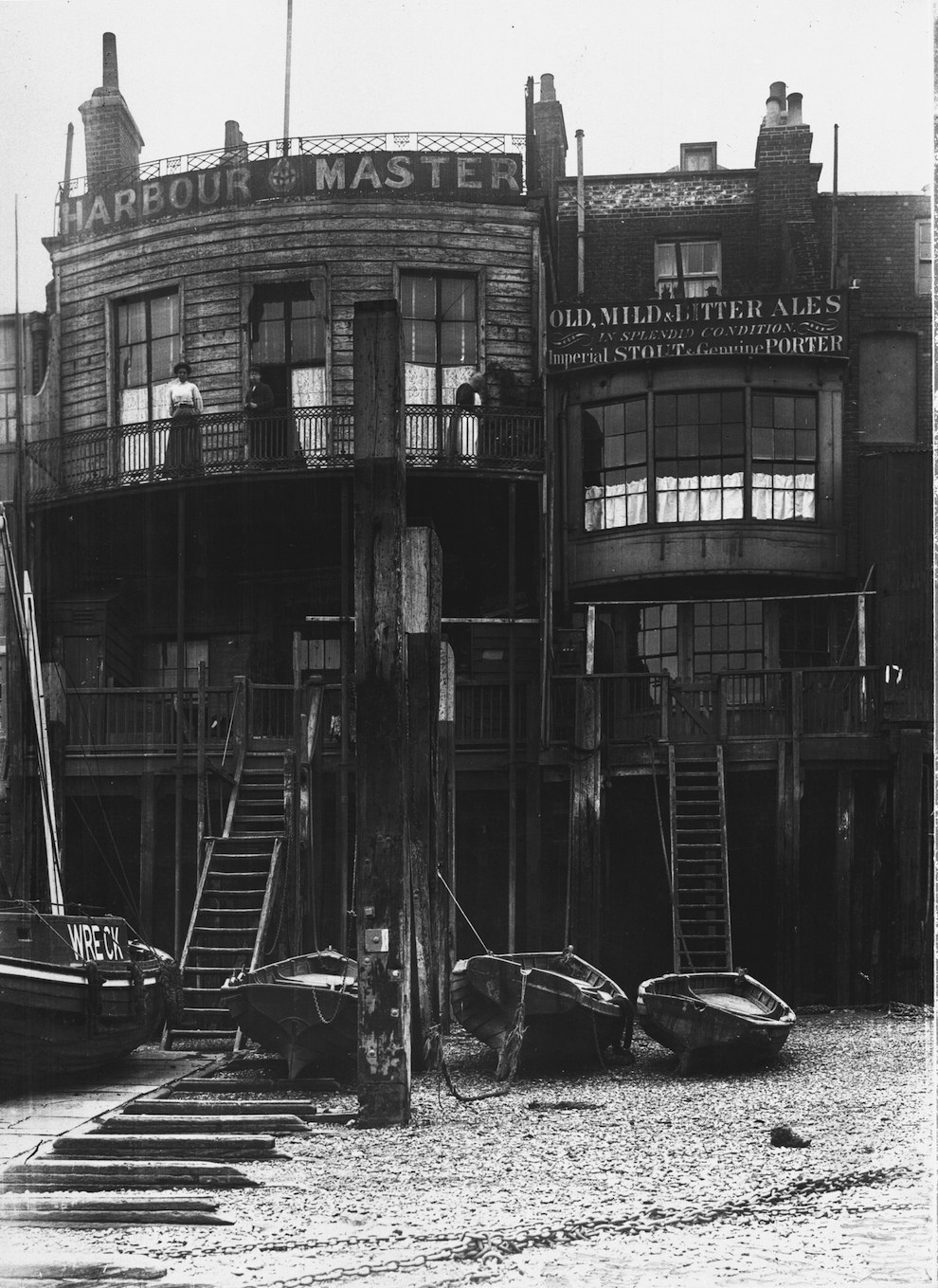
From there I stumbled upon this lovely, evocative photograph of Isambard Kingdom Brunel and his homies. Isambard is the civil engineer who helped build the Great Eastern Railway among other things. Isambard is the one with the cigar in his mouth, or maybe it’s a pencil.
At any rate, I love this photograph because it was taken in 1857, which is near to the era I like to write about, and you can see the wrinkles in his trousers and the mud on his jacket. It’s not artfully posed in a studio, it’s completely candid. They probably didn’t know they were being photographed, because if they had, they’d be all stiff and unnatural looking. Instead, they are intense on what they are doing, and standing about as men do who are intent on Making Really Big Things. So many layers they are wearing!

Then I stumbled across a variety of sites (British History Something-Or-Other, by golly I wish I’d marked that site!) that had a number of pen and ink etchings of streets and houses around London in the 1800’s. If you’re a writer, then you get Sucked In thinking you can save that image and go back to it to get some great details for thus-and-such scene. Here are a few examples:
Here’s a building in Spitalfields.

Here is Cock Lane; evidently there’s a ghost story associated with this area.
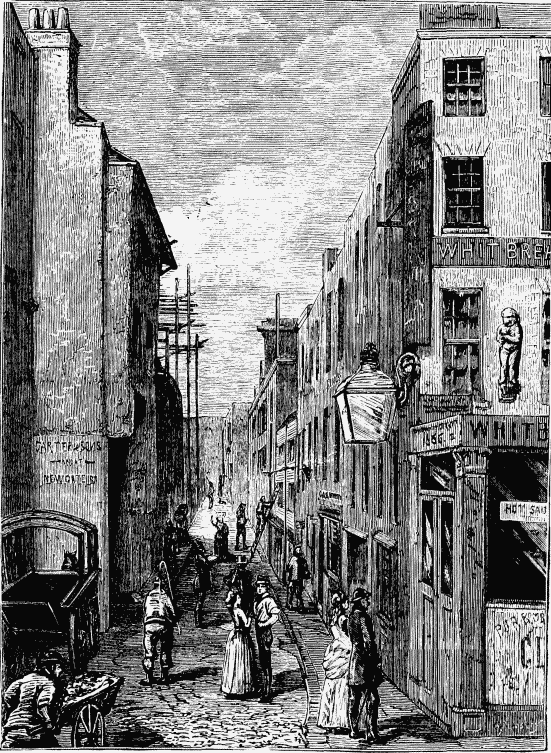
And of course here’s Field Lane, which I describe many times in my books, as Jack and Oliver often go down this lane to get to High Holborn.
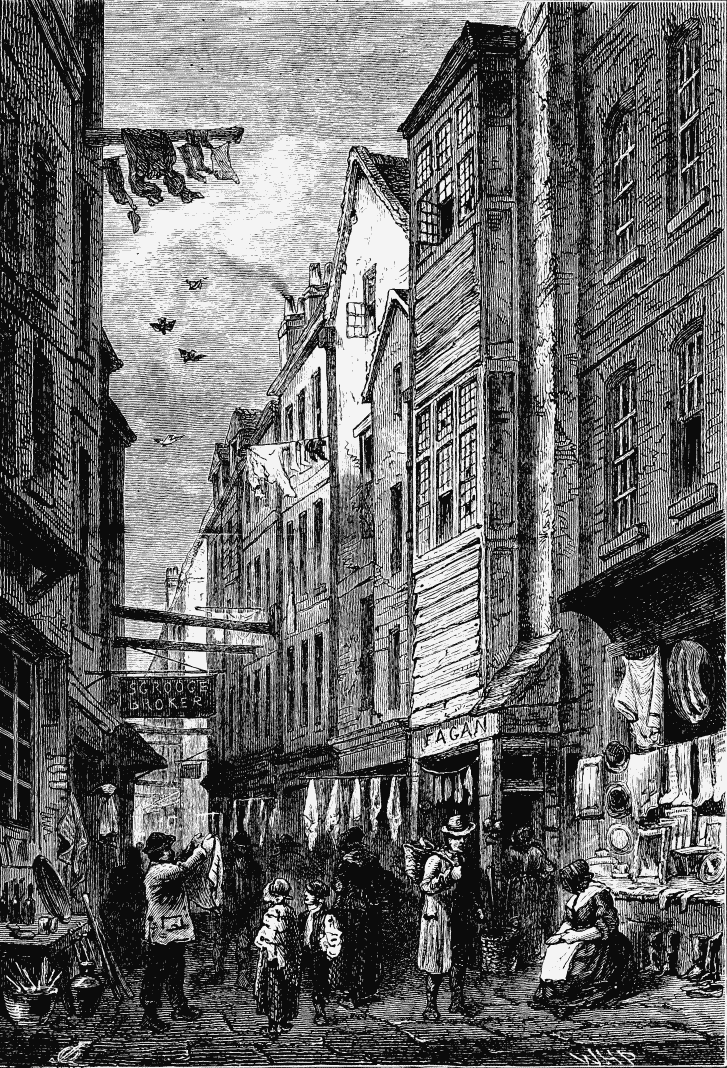
Here’s the corner of Giltspur Street.
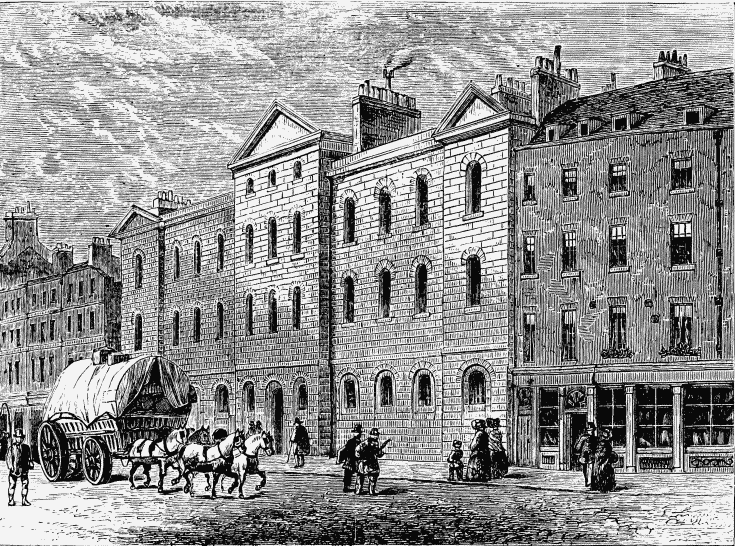
Here’s an unusual drawing of Holborn Bridge over Fleet Ditch, which was covered over in the mid-1800’s.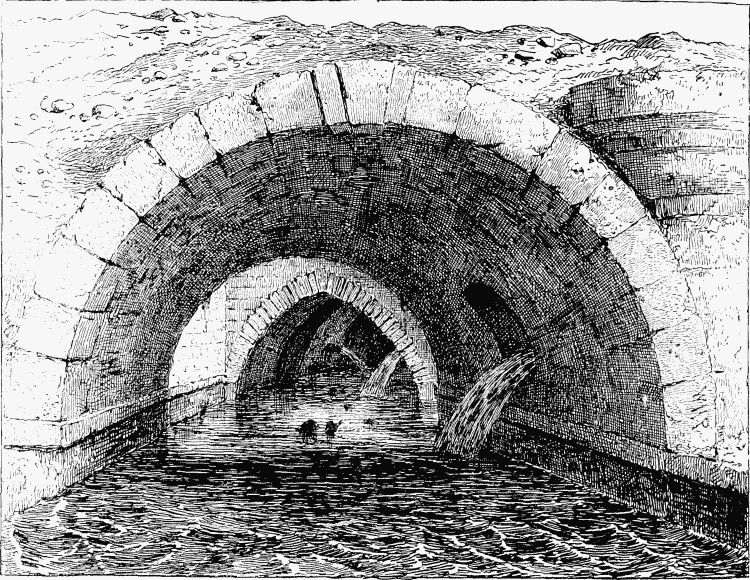
Here’s one of the Holborn Valley Viaduct, as it was being built in the later 1800’s. Before the viaduct was built, Saffron Hill was a warren of thieves’s dens and dicey back alleys. Also, Holborn Hill went almost straight downhill into the Fleet River and was a menace to horses and coaches during the winter.
The description on the webpage reads, in part:
“The Illustration on our next page is taken from Holborn-hill, near the end of Shoe-lane. It looks down into the bottom, to the right of which is Farringdon-street, but concealed by the houses at the corner and by the lofty barricades; to the left is the end of Victoria-street; and, beyond, in the distance, the ascent of Snow-hill and Skinner-street, with St. Sepulchre’s Church on the one hand, and St. Paul’s dome on the other.”
So does that mean that up to the left is Saffron Hill (which is just beyond Snow Hill), which is, also, the alleged location of basis for the Three Cripples??? What a tantalizing glimpse of that era!
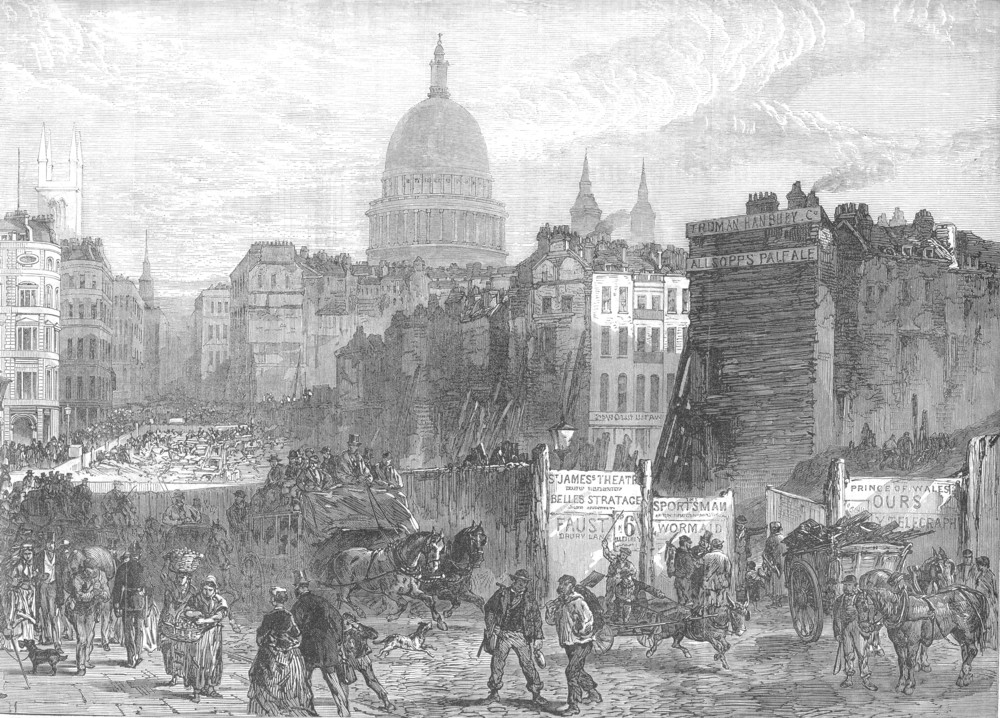
Then I found drawings of old hulks languishing in the Thames River. These are significant because in On The Isle Of Dogs Oliver and Jack are snatched off the streets and are held in one of these.
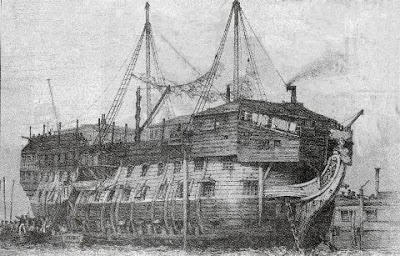
Then here’s one I found of Newgate Prison (again!), for which I have an odd and probably unhealthy fascination. Sadly the structure was demolished in 1902. Can you imagine the tourist draw?
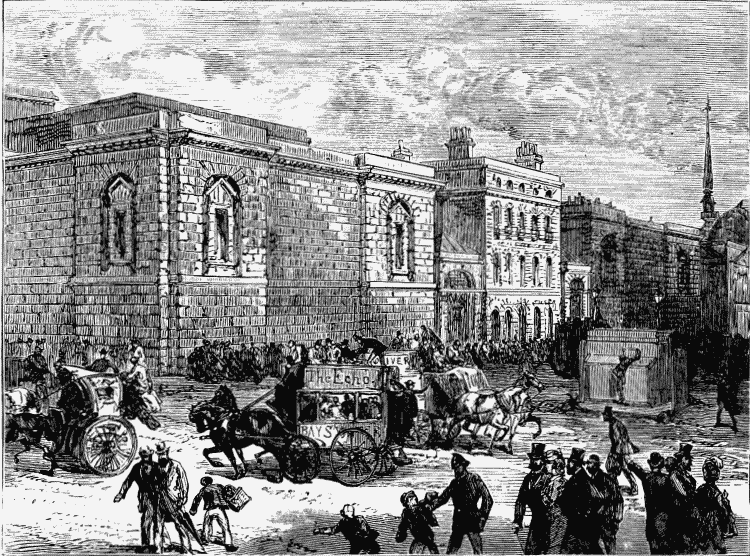
Then I got sucked into old maps of Sptialfields, which, as you know, was the northern edge of the territory for the killings done by Jack the Ripper. (Actually, I didn’t know that until I started looking at the old maps.) This one has the locations of the murders marked with red dots.
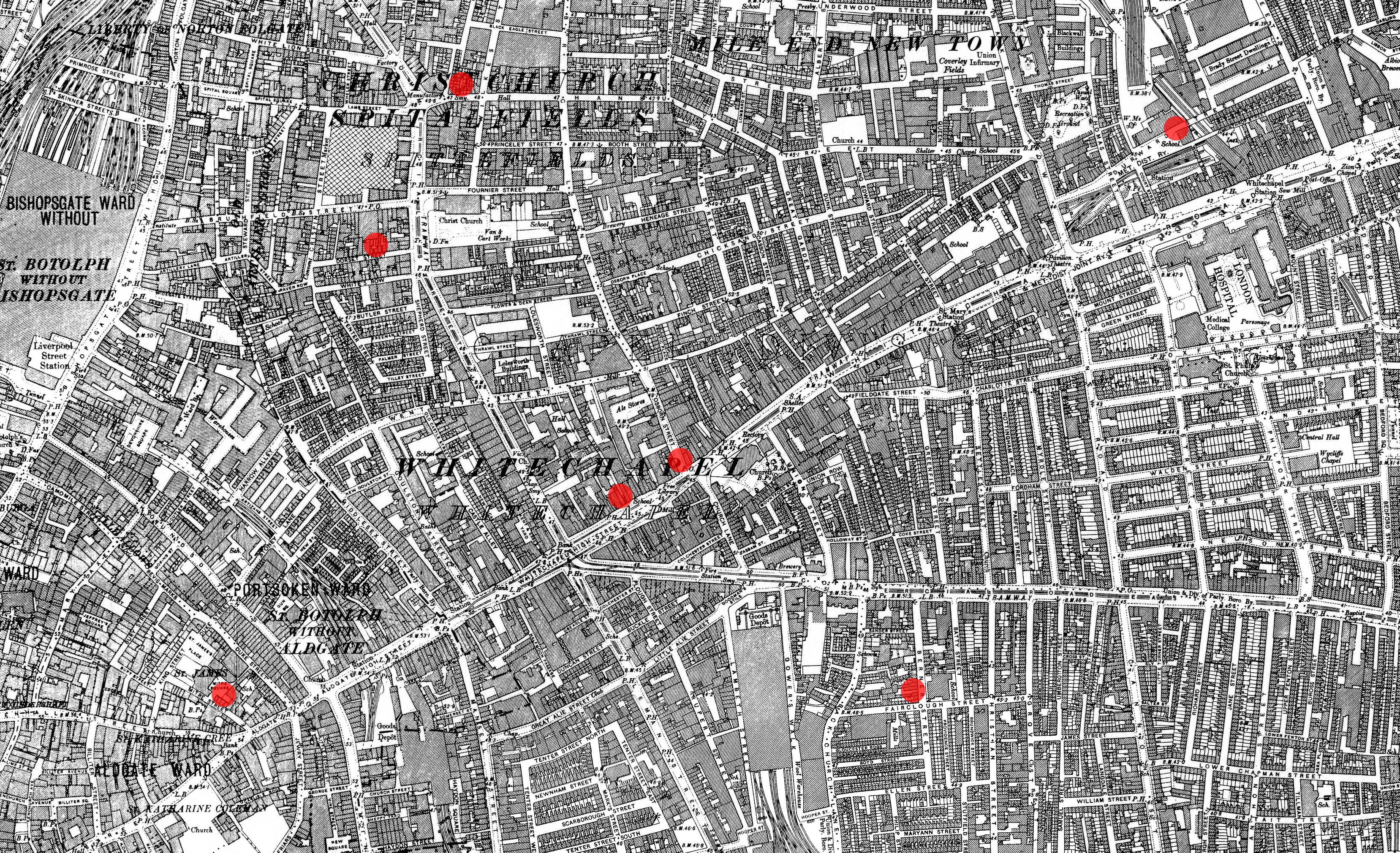
But here’s the most important map of Spitalfields that I came across. It depicts the VERY area that shows up in On The Isle Of Dogs, and that is the location of the townhouse of a kindly old gentleman who Oliver meets while on a sojourn in the streets of London. The gentleman lives at Number Four Steward Street, so draw your finger from the top of Steward Street down, and count four houses and there you are!
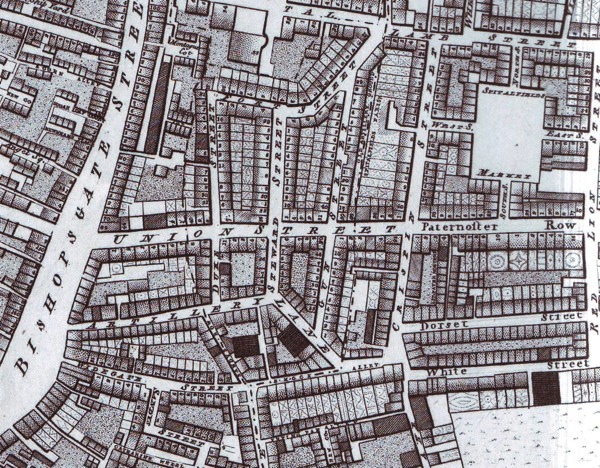
Anyway, whilst I was doing that, the sun was shining, and people were in their cars going places that were fun, where the sun was sunny, and air was filled with that syrupy warmth that only a September sun has. Oh dear, I missed it all. But such is a life of a writer and I wouldn’t have it any other way.
This sounds so much like the way I work. Fabulous pictures.
Oh yes? You write and write and never leave the house too? What a life. What a glorious life! : D
It’s a writer’s life for us!
You know it! I never leave the house anymore!